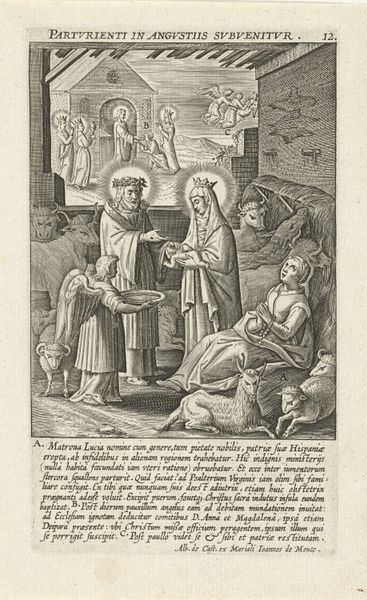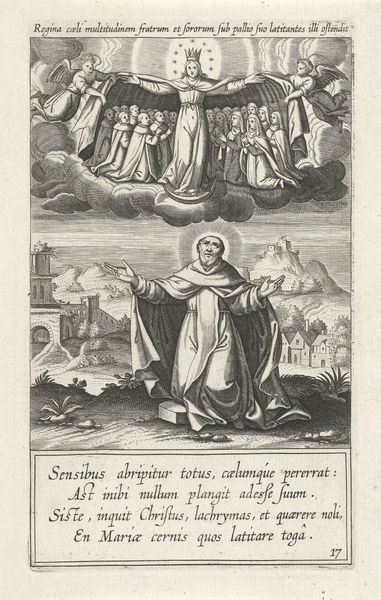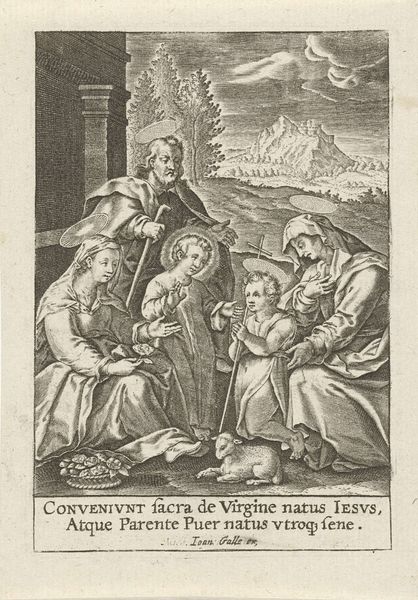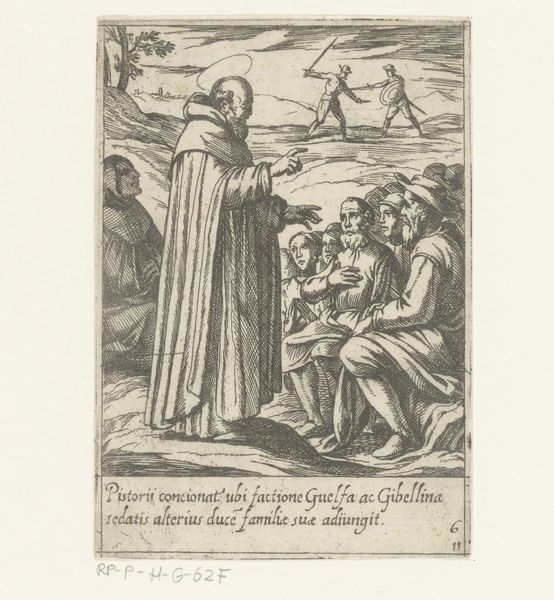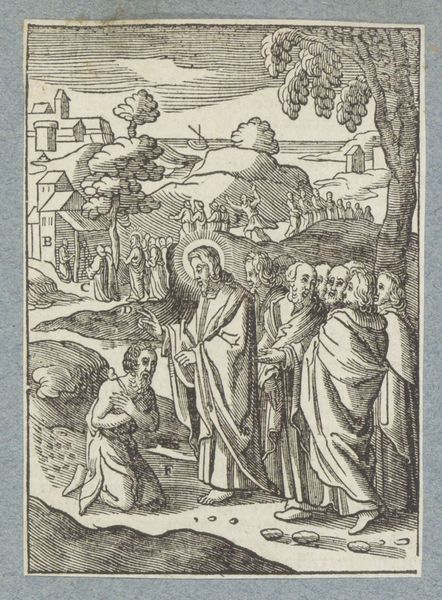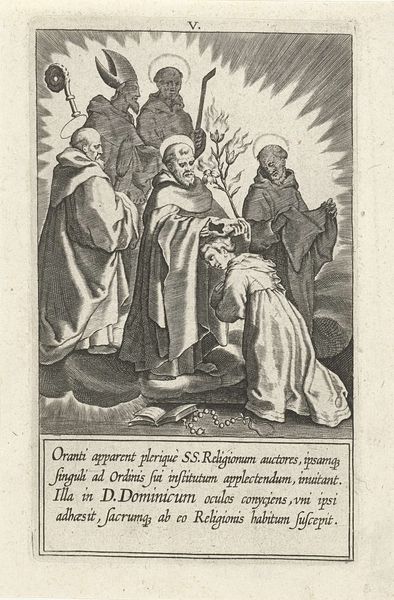
print, engraving
#
baroque
# print
#
old engraving style
#
landscape
#
figuration
#
line
#
history-painting
#
northern-renaissance
#
engraving
Dimensions: width 90 mm, height 150 mm
Copyright: Rijks Museum: Open Domain
Curator: I find this 1611 engraving, "Miracle of the Rain Shower" by Theodoor Galle, fascinating. It's a story captured in lines. Editor: My initial feeling? Stark contrasts. That intense downpour, almost like vertical bars, versus the figures bathed in light. It feels dramatic, certainly. Curator: Absolutely. Galle's skill lies in constructing narrative. Look how the community—presumably saved by Saint Dominic—clings to him. It emphasizes the Church as protector in a turbulent era. It’s more than faith. It’s community survival, depicted through devotion. Editor: The halos almost solidify that sense, yes, but look at the background as well. That village. It represents more than safety, though—that bright, halo-like glow on the individual walking beside him feels psychologically reassuring; not just divine but intimately calming in an earthly way. It grounds us in how faith eases individual and communal anxieties during periods of societal change and external hardships. Curator: The imagery certainly reflects the political climate as well as societal unrest of the time. The early 17th century saw considerable political instability across Europe, Galle presents Saint Dominic as an emblem of stability amid chaos. Print became crucial media and tool through such tumultuous changes. Religious figures represented tangible connections, visible proofs against chaos and anxiety Editor: Do you think that's why the crowd has no unique facial expressions to tell them apart as individuals but instead seem more symbolic, unified under robes—so we’re clearly driven to interpret this event and Saint Dominic himself as representative and universal concepts? Not merely individuals within an isolated incident. Curator: Exactly! These depictions reinforced the idea of a shared identity—faith, salvation and protection through devotion—effectively mobilizing the population in favor of the Church's power. And the choice of line engraving allowed for wide distribution; political and cultural propaganda into every home. Editor: So, by visually anchoring salvation and societal harmony to such a striking act of holy intervention, Galle subtly bolstered social power? Amazing. Curator: That's the historian in me! The artwork itself can tell stories of how institutions negotiate their power during transformative periods, how symbols take new weight under historical circumstances, especially considering Galle worked under the Plantin-Moretus printing press whose network had considerable reach during his time Editor: It's remarkable how a seemingly simple print can be unpacked layer by layer. Gives so much significance to an object that could otherwise be easily glossed over.
Comments
No comments
Be the first to comment and join the conversation on the ultimate creative platform.
